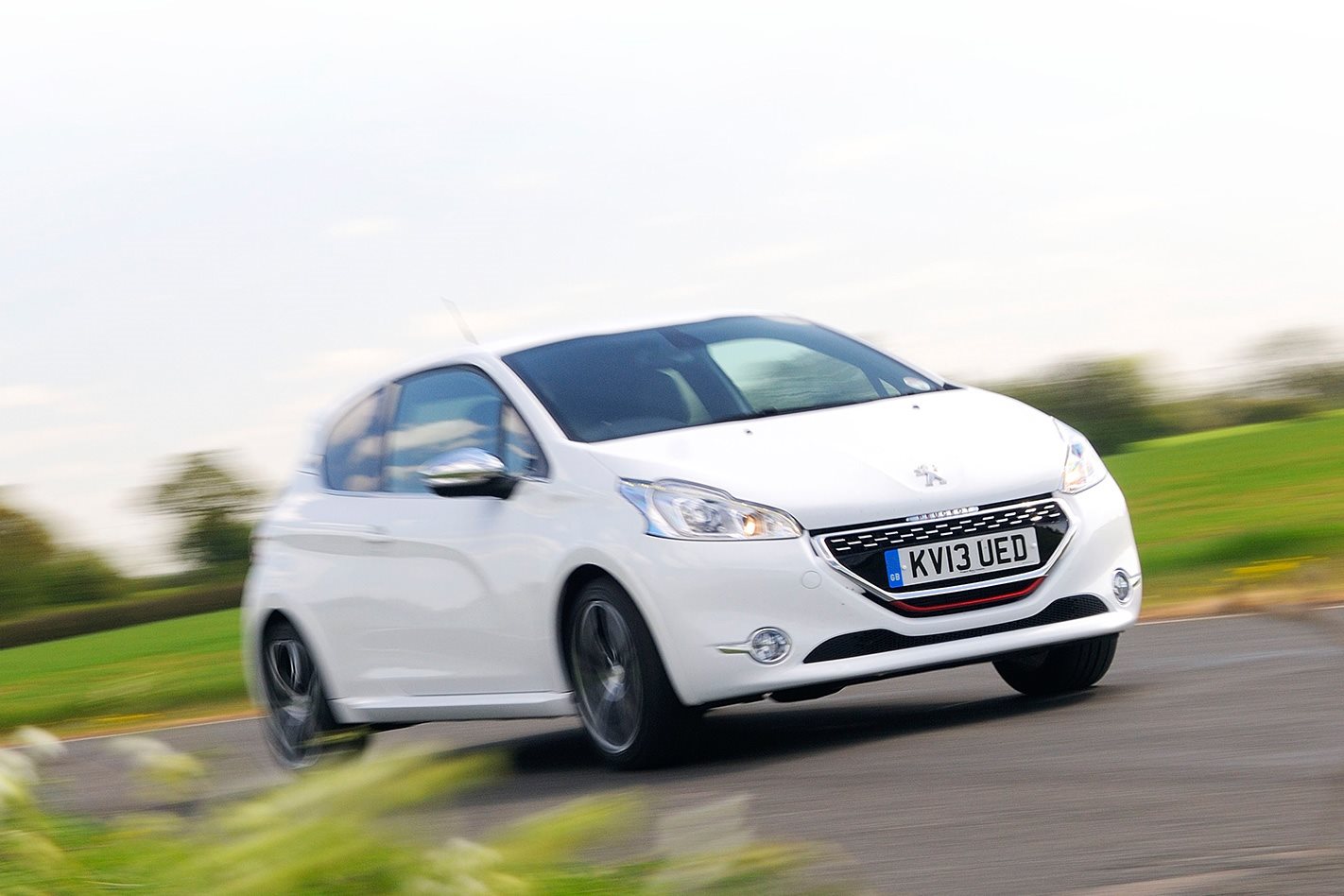Before you order a Renault Sport Clio, do yourself a big favour and get your mitts on a Peugeot 208 GTi.
The first Peugeot GTi to be sold here (from August) since the 206 GTi 180 was pensioned off in 2007, the 208 follows a string of Pugs wearing those famous three letters that didn’t quite live up to the benchmark set by the wonderful, feisty mid-’80s 205.
So can the 208 bring GTi redemption? Like its arch-rival Clio, the 208 GTi boasts 147kW 1.6-litre turbo four power under its equally frumpy bonnet. The Pug, however, has a six-speed manual, less weight and fewer doors than the five-door, dual-clutch-only Renault.
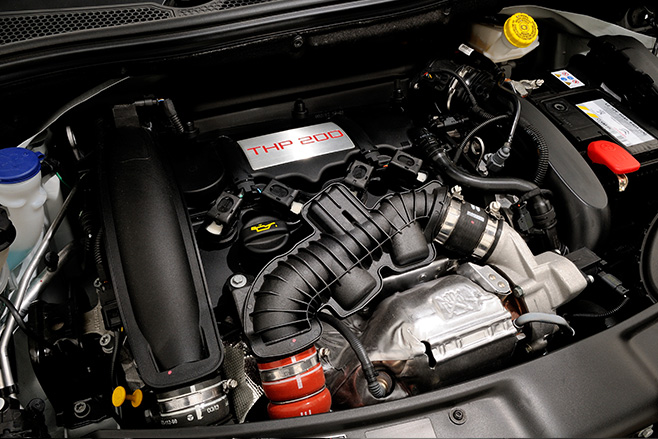
Renault Clio RS v Ford Fiesta ST v VW Polo GTI v Peugeot 208 GTi
Not that the Pug advertises its pace all that much on the outside. You could say it’s subtle and sophisticated, but look closely and those ‘extended wheelarches’ look glued-on with double-sided tape. And the 17-inch alloys, while being elaborate in design, appear way too small.
The bodykit, too, which includes our test car’s optional nose-bleed lower red vane, looks like an afterthought compared to the more integrated add-ons adorning other compact hot hatch suspects. And from the rear, this anonymous white hatch could easily be mistaken for a Pom’s hire car somewhere in Spain.

Essential to the sporting ensemble inside is the traditional red stitching, red centre-marker on the leather wheel and the bright red LED that borders the dials that can be switched on or off at the touch of a button. The carbon-patterned instruments are carried over from the concept car and look cool, but you’ll have trouble reading them because the driving position – much like in Peugeot’s RCZ – is an afterthought. Typically French, then…
It’s almost as if the 208 was developed without a performance model in mind, because the steering column doesn’t offer enough adjustment, so you feel like you’re holding the tiny steering wheel too close to your chest once you’ve set the pedals right. Adjust the wheel, and then the pedals are too close. Taller drivers who favour longer-haul, ergonomic comfort need not apply.
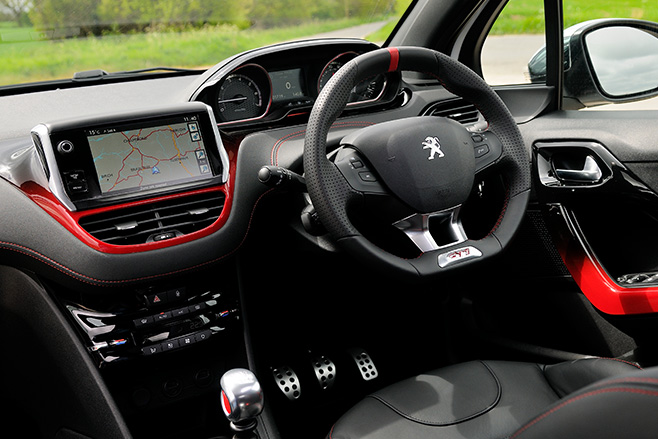
The power delivery from the 1.6 turbo – the same PSA donk used in the RCZ, DS3 and Mini – isn’t brutal so you’ll need to drop a gear for instant punch, but it does deliver the goods in a progressive and linear manner. It’s a shame that the GTi’s engine doesn’t have the perky nature that it does in the Mini, where it’s raspy note and soothing burble on overrun make you want to mash the throttle over and over just to hear it again.
The Pug seems too conservative for such shenanigans. Still, the bigger brakes (302mm discs up front!) let you approach corners with gusto, and while the electric steering isn’t super quick, it has great progression despite turn-in not being quite as sharp as other hot hatches out there, such as the Clio.
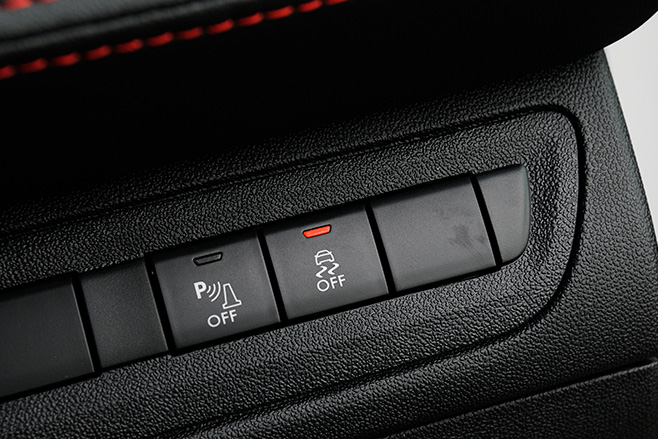
That doesn’t mean it’s not capable around corners. An extra 10mm front and 20mm rear tracks over the regular 208 endows the GTi with slightly bolder cornering purpose, while its lighter weight encourages you to throw it into curves, where it’s easy to get the nose in and mash the loud pedal on the way out. That said, you still have to modulate the throttle to avoid it all going up in a cloud of smoke – literally. A proper mechanical diff would solve this.
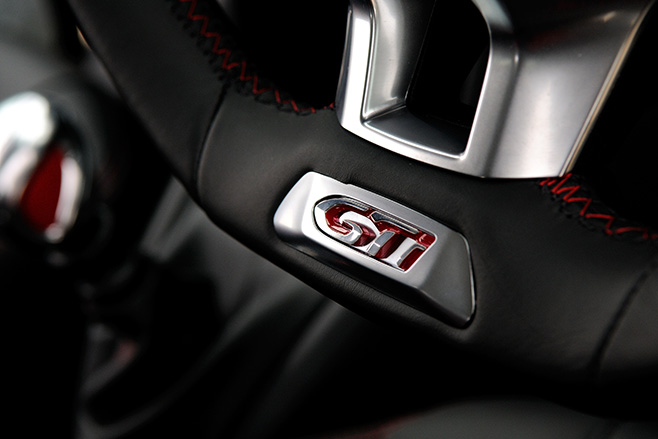
Trouble is, the existence of the Ford Fiesta ST means that both French hatches have their work cut-out for them. And, PR peeps at Peugeot must wish that the 205 GTi never existed, as the glasses become increasingly rose-coloured for the new car’s ancestor.
Peugeot 205 GTI vs 208 GTI 30th Anniversary
For modern hatches, though, things have moved on: lift-off oversteer is not a trait desired by owners these days, sadly. However, balls-out, corner carving is where compact hot hatchdom has been heading since the Clio 197s, Fiesta XR4s and like lobbed onto the small car scene. And right here is where the Peugeot has missed a huge slice of mojo.
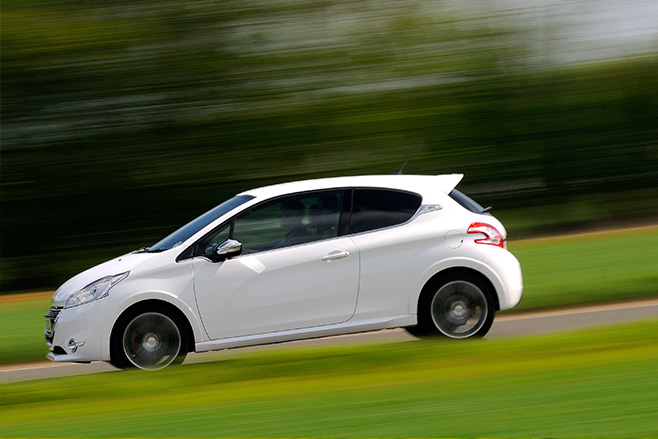
While that’s lamentable, it also gives the Pug a niche offering in the small hatch segment as a comfortable, competent performer. Its understated looks could be viewed as a Q-car boon rather than undesired blandness and anonymity, while the more comfort-focused cabin makes rivals such as the Clio look childish and imply that perhaps the money ran out at Ford before they got to the Fiesta ST’s dash.
On the other hand, take a more critical view and you could say the 208 simply hasn’t been honed with same depth and skill as many of its rivals, and that the Pug has a broadly pitched tent rather than a definitive goal, denying it a sharp, focussed role as pure hot hatch. However rewarding and entertaining it is to punt, the 208 GTi falls a little short of its legendary ’80s predecessor’s legacy. Though it’s far from a dud.

Rating: 7.5 stars Pros: Nimble, lively handling, ride comfort, rich interior Cons: Not as hot or focussed as we’d hoped, crook bodykit
Peugeot 208 GTi Specs: Body: 3-door, 5-seat hatch Drive: front wheels Engine: inline four, DOHC, 16v, turbo Material: alloy head/iron block Bore/stroke: 77.0 x 85.8mm Capacity: 1598cc Compression: 10.5:1 Power: 147kW @ 5800rpm Torque: 275Nm @ 1700-4500rpm Kerb weight: 1085kg Power to weight: 135kW/tonne Transmission: 6-speed manual Suspension: struts, A-arms, coil springs, anti-roll bar (f), torsion beam, coil springs, anti-roll bar (r) Length/width/height: 3962/1739/1460mm Wheelbase: 2538mm Tracks (F/R): 1481/1487mm Steering: electric rack and pinion Brakes: 302mm ventilated discs ??? piston calipers (f), 249mm discs single-piston calipers (r), ABS, EBA, ASR, ESP Wheels: 17×7-inch, alloy Tyres: Continental ContiSportContact 3 Size: 205/45 R17 Price: $29,990 (estimated)

